-
 Bitcoin
Bitcoin $94,238.7645
-1.18% -
 Ethereum
Ethereum $1,804.8972
-1.21% -
 Tether USDt
Tether USDt $1.0001
0.00% -
 XRP
XRP $2.1376
-1.95% -
 BNB
BNB $594.1785
0.73% -
 Solana
Solana $144.1346
-0.84% -
 USDC
USDC $1.0000
0.01% -
 Dogecoin
Dogecoin $0.1702
-1.70% -
 TRON
TRON $0.2494
0.88% -
 Cardano
Cardano $0.6603
-3.72% -
 Sui
Sui $3.4298
6.19% -
 Chainlink
Chainlink $13.6910
-2.58% -
 Avalanche
Avalanche $19.5126
-2.35% -
 Stellar
Stellar $0.2609
-1.81% -
 UNUS SED LEO
UNUS SED LEO $8.6293
-5.45% -
 Shiba Inu
Shiba Inu $0.0...01258
-2.01% -
 Toncoin
Toncoin $2.9770
-3.44% -
 Hedera
Hedera $0.1731
-2.64% -
 Bitcoin Cash
Bitcoin Cash $352.8288
-1.03% -
 Hyperliquid
Hyperliquid $20.1428
-3.17% -
 Litecoin
Litecoin $87.8257
2.20% -
 Polkadot
Polkadot $3.9123
-0.88% -
 Dai
Dai $1.0000
-0.01% -
 Monero
Monero $279.4444
2.46% -
 Bitget Token
Bitget Token $4.2865
-0.73% -
 Ethena USDe
Ethena USDe $1.0004
-0.01% -
 Pi
Pi $0.5915
-0.44% -
 Pepe
Pepe $0.0...07920
-2.83% -
 Aptos
Aptos $5.0712
-1.12% -
 Uniswap
Uniswap $4.9793
-1.61%
Are digital currency hot wallets safe?
Despite the risks associated with their online connectivity, hot wallets provide convenience and accessibility for storing and transacting digital currencies. However, it's crucial to implement robust security measures to mitigate potential threats and safeguard your valuable crypto assets.
Jan 12, 2025 at 12:18 pm

Key Points:
- Understanding Digital Currency Hot Wallets
- Common Security Threats and Mitigations for Hot Wallets
- Best Practices for Digital Currency Hot Wallet Security
Are Digital Currency Hot Wallets Safe?
Digital currency hot wallets, which enable the storage, sending, and receiving of cryptocurrencies, provide convenience and accessibility. However, concerns exist regarding their safety due to their constant internet connectivity. This article explores the security of hot wallets, addressing potential threats and offering best practices to enhance protection.
Understanding Digital Currency Hot Wallets
Hot wallets operate on devices with persistent internet connections, such as smartphones or computers. They provide real-time access to funds, allowing for instant transactions. Their convenience comes with a potential risk, as they are vulnerable to cyberattacks due to their online presence.
Common Security Threats and Mitigations for Hot Wallets
1. Phishing Attacks
These attacks attempt to steal login credentials by tricking users into providing sensitive information through fraudulent emails or websites.
Mitigation: Use secure email providers, be vigilant about sender legitimacy, and never share private keys or passwords.
2. Malware
Malware, malicious software, can infect devices and steal private keys or compromise wallet functionality.
Mitigation: Install reputable antivirus software, keep software updated, and avoid downloading from untrusted sources.
3. Man-in-the-Middle (MITM) Attacks
MITM attacks intercept communications between devices and manipulate data, potentially redirecting funds to unauthorized wallets.
Mitigation: Use secure connections (HTTPS), verify the validity of wallet addresses before sending funds, and report suspicious activity.
4. Keylogger Attacks
Keyloggers capture keystrokes, revealing private keys or login credentials.
Mitigation: Install keystroke encryption software, use virtual keyboards when entering sensitive information, and be aware of suspicious processes running in the background.
5. Brute Force Attacks
These attacks repeatedly attempt to guess private keys or passwords.
Mitigation: Use strong, complex passwords, enable two-factor authentication (2FA), and store private keys securely offline.
Best Practices for Digital Currency Hot Wallet Security
1. Secure Your Device
Use strong passwords, enable biometric authentication, and regularly update your device's operating system and security patches.
2. Practice Password Hygiene
Create unique, complex passwords for each hot wallet and change them periodically. Avoid using common phrases or easily guessable words.
3. Implement Two-Factor Authentication (2FA)
2FA adds an extra layer of security by requiring a second verification method, such as a code sent via text or email, when accessing hot wallets.
4. Keep Software Updated
Regularly update hot wallet software and operating systems to address known vulnerabilities and security patches.
5. Monitor Transactions
Review transactions regularly for unauthorized activity and report any suspicious or unusual activity to the wallet provider.
6. Be Aware of Social Engineering Scams
Beware of emails, text messages, or calls that attempt to solicit private keys or sensitive information. Verify the source of all requests.
7. Use a Hardware Wallet
Consider transferring significant amounts of cryptocurrency to a hardware wallet, a physical device that stores private keys offline, enhancing security.
8. Back Up Your Private Keys
Create secure backups of your private keys in multiple offline locations, such as a physical storage device or a password manager.
FAQs
Q: Are hot wallets safer than hardware wallets?
A: No. Hardware wallets provide enhanced security due to their offline storage capabilities.
Q: How can I protect my hot wallet from hacking?
A: Implement security measures such as strong passwords, 2FA, avoiding untrusted sources, and maintaining software updates.
Q: Should I store all my cryptocurrency in a hot wallet?
A: No. It is recommended to store significant amounts in a hardware wallet and only keep smaller sums in a hot wallet for convenience.
Q: What are some signs of a compromised hot wallet?
A: Unauthorized transactions, changes in balances, or emails/messages requesting sensitive information can indicate a compromise.
Disclaimer:info@kdj.com
The information provided is not trading advice. kdj.com does not assume any responsibility for any investments made based on the information provided in this article. Cryptocurrencies are highly volatile and it is highly recommended that you invest with caution after thorough research!
If you believe that the content used on this website infringes your copyright, please contact us immediately (info@kdj.com) and we will delete it promptly.
- Rollman Management Invests $20 Million in IBVM's Bitcoin Layer 2 Technology
- 2025-05-05 22:30:12
- Binance Expands Spot Trading Pairs with ENJ/USDC and VIRTUAL/TRY
- 2025-05-05 22:30:12
- BC.GAME Launches Phase 2 of Its $BC Mining Event, Featuring a 1 Billion $BC Prize Pool
- 2025-05-05 22:25:12
- VanEck Files with the SEC to Launch the First U.S. BNB-Based ETF
- 2025-05-05 22:25:12
- Critical Security Flaw in Solana Labs' Token-2022 and ZK ElGamal Proof Programs
- 2025-05-05 22:20:11
- Former U.S. President Donald Trump Reiterated His Support for Cryptocurrency
- 2025-05-05 22:20:11
Related knowledge
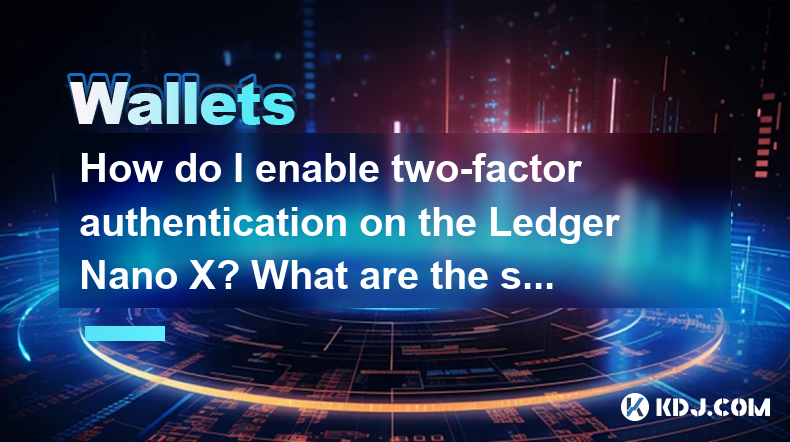
How do I enable two-factor authentication on the Ledger Nano X? What are the security options?
May 02,2025 at 09:49pm
Enabling two-factor authentication (2FA) on your Ledger Nano X is a critical step in securing your cryptocurrency assets. The Ledger Nano X offers robust security options that enhance the protection of your digital wealth. In this article, we will guide you through the process of enabling 2FA on your Ledger Nano X and explore the various security featur...
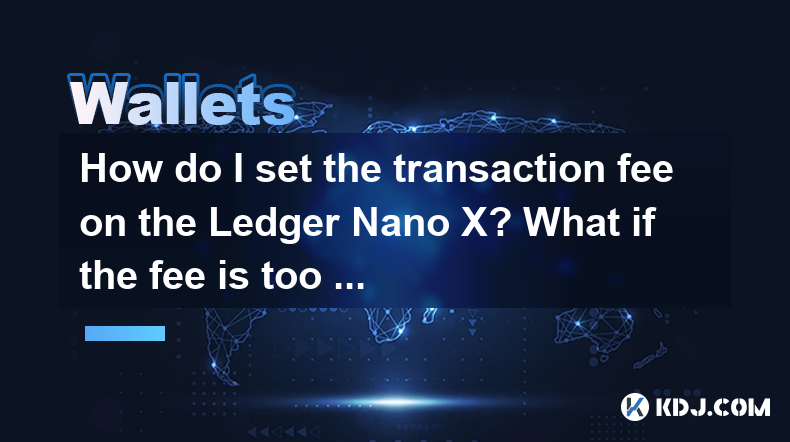
How do I set the transaction fee on the Ledger Nano X? What if the fee is too high?
May 05,2025 at 09:21pm
Setting the transaction fee on your Ledger Nano X is an essential part of managing your cryptocurrency transactions efficiently. The transaction fee directly impacts how quickly your transaction is processed and confirmed on the blockchain. In this guide, we will walk you through the steps to set the transaction fee on your Ledger Nano X, and what to do...

How do I export the Ledger Nano X transaction history? How long can the data be saved?
May 04,2025 at 07:21am
Introduction to Ledger Nano X and Transaction HistoryThe Ledger Nano X is a hardware wallet designed to store your cryptocurrency safely. It supports a wide range of cryptocurrencies and offers robust security features. One of the essential aspects of managing your cryptocurrencies is keeping track of your transaction history. The Ledger Nano X allows y...
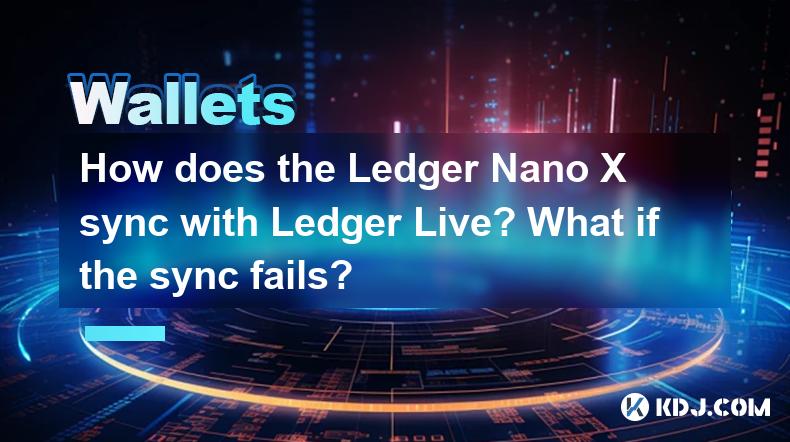
How does the Ledger Nano X sync with Ledger Live? What if the sync fails?
May 04,2025 at 12:07pm
The Ledger Nano X is a popular hardware wallet that allows users to securely manage their cryptocurrency assets. One of the key features of the Ledger Nano X is its ability to sync with the Ledger Live application, which provides a user-friendly interface for managing your crypto portfolio. In this article, we will explore how the Ledger Nano X syncs wi...
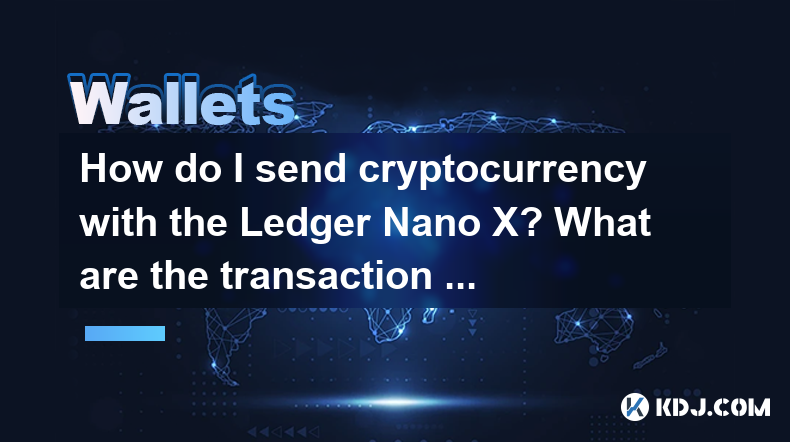
How do I send cryptocurrency with the Ledger Nano X? What are the transaction confirmation steps?
May 03,2025 at 05:01am
Sending cryptocurrency using the Ledger Nano X involves a series of steps that ensure the security and accuracy of your transactions. This process is designed to be user-friendly while maintaining the high level of security that Ledger devices are known for. In this article, we will guide you through the process of sending cryptocurrency with the Ledger...
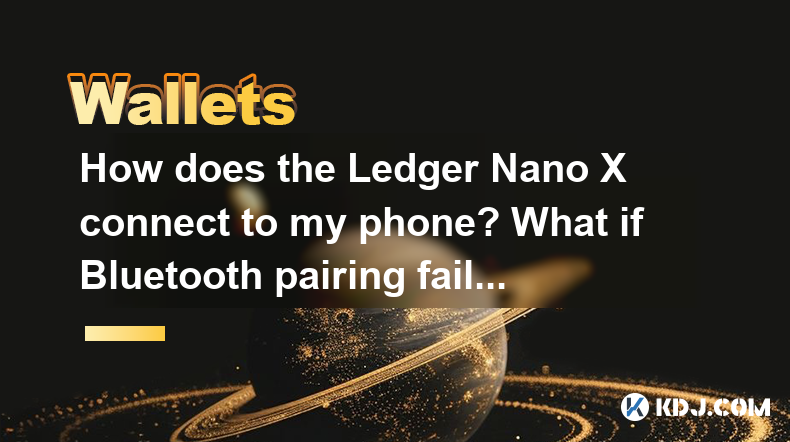
How does the Ledger Nano X connect to my phone? What if Bluetooth pairing fails?
May 02,2025 at 07:07pm
The Ledger Nano X is a popular hardware wallet designed to securely store your cryptocurrency. One of its key features is the ability to connect to your smartphone via Bluetooth, allowing for a seamless and convenient user experience. In this article, we will explore how to connect your Ledger Nano X to your phone and what to do if Bluetooth pairing fai...

How do I enable two-factor authentication on the Ledger Nano X? What are the security options?
May 02,2025 at 09:49pm
Enabling two-factor authentication (2FA) on your Ledger Nano X is a critical step in securing your cryptocurrency assets. The Ledger Nano X offers robust security options that enhance the protection of your digital wealth. In this article, we will guide you through the process of enabling 2FA on your Ledger Nano X and explore the various security featur...

How do I set the transaction fee on the Ledger Nano X? What if the fee is too high?
May 05,2025 at 09:21pm
Setting the transaction fee on your Ledger Nano X is an essential part of managing your cryptocurrency transactions efficiently. The transaction fee directly impacts how quickly your transaction is processed and confirmed on the blockchain. In this guide, we will walk you through the steps to set the transaction fee on your Ledger Nano X, and what to do...

How do I export the Ledger Nano X transaction history? How long can the data be saved?
May 04,2025 at 07:21am
Introduction to Ledger Nano X and Transaction HistoryThe Ledger Nano X is a hardware wallet designed to store your cryptocurrency safely. It supports a wide range of cryptocurrencies and offers robust security features. One of the essential aspects of managing your cryptocurrencies is keeping track of your transaction history. The Ledger Nano X allows y...

How does the Ledger Nano X sync with Ledger Live? What if the sync fails?
May 04,2025 at 12:07pm
The Ledger Nano X is a popular hardware wallet that allows users to securely manage their cryptocurrency assets. One of the key features of the Ledger Nano X is its ability to sync with the Ledger Live application, which provides a user-friendly interface for managing your crypto portfolio. In this article, we will explore how the Ledger Nano X syncs wi...

How do I send cryptocurrency with the Ledger Nano X? What are the transaction confirmation steps?
May 03,2025 at 05:01am
Sending cryptocurrency using the Ledger Nano X involves a series of steps that ensure the security and accuracy of your transactions. This process is designed to be user-friendly while maintaining the high level of security that Ledger devices are known for. In this article, we will guide you through the process of sending cryptocurrency with the Ledger...

How does the Ledger Nano X connect to my phone? What if Bluetooth pairing fails?
May 02,2025 at 07:07pm
The Ledger Nano X is a popular hardware wallet designed to securely store your cryptocurrency. One of its key features is the ability to connect to your smartphone via Bluetooth, allowing for a seamless and convenient user experience. In this article, we will explore how to connect your Ledger Nano X to your phone and what to do if Bluetooth pairing fai...
See all articles




















































































